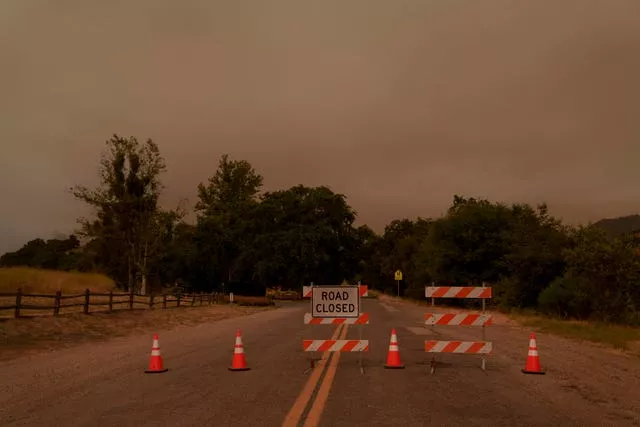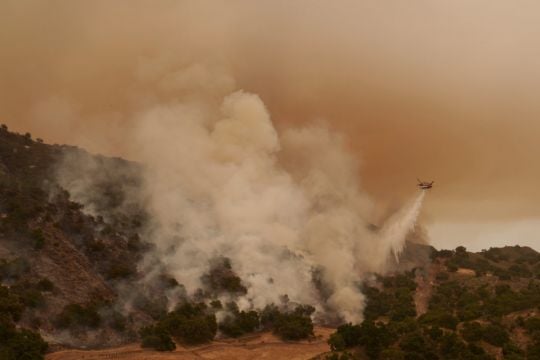A long-running heatwave that has already shattered previous records across the US will persist, baking parts of the West with dangerous temperatures that will soar throughout the week, forecasters said on Sunday.
In California, crews worked in sweltering conditions to battle a series of wildfires across the state.
In Santa Barbara County, northwest of Los Angeles, a fire had scorched more than 20 square miles (53 square kilometres) of dry grass, brush and timber after breaking out Friday.
There was no containment by Sunday morning. The blaze was burning through mostly uninhabited wildland, but some rural homes were under evacuation orders.
High temperatures were expected through the week, with little relief from the heat even at night.

An excessive heat warning — the National Weather Service’s highest alert — was in effect for about 36 million people, or about 10% of the population, said NWS meteorologist Bryan Jackson.
Dozens of locations in the West and Pacific Northwest were expected to tie or break previous heat records, he said.
Many areas in Northern California surpassed 43.3 degrees, with the city of Redding topping out at a record 48.3 degrees. Phoenix set a new daily record on Sunday for the warmest low temperature: it never got below 33.3 degrees.
Las Vegas on Saturday tied the record of 46 degrees, last reached in 2007, and on Sunday the city was flirting with a record high of 47.7C.
Temperatures in Oregon were expected to exceed 37.7 degrees on Sunday and soar as high as 46.1 degrees in some parts of California, Mr Jackson said. On the more humid East Coast, temperatures above 37.7 degrees were expected, though no excessive heat advisories were in effect for the region on Sunday.
On Saturday, Raleigh in North Carolina reached an all-time record high of 41.1 degrees, with a maximum heat index of 47.7 degrees, he said.
Rare heat advisories were extended even into higher elevations, including around Lake Tahoe, on the border of California and Nevada, with the National Weather Service in Reno, Nevada, warning of “major heat risk impacts, even in the mountains”.







